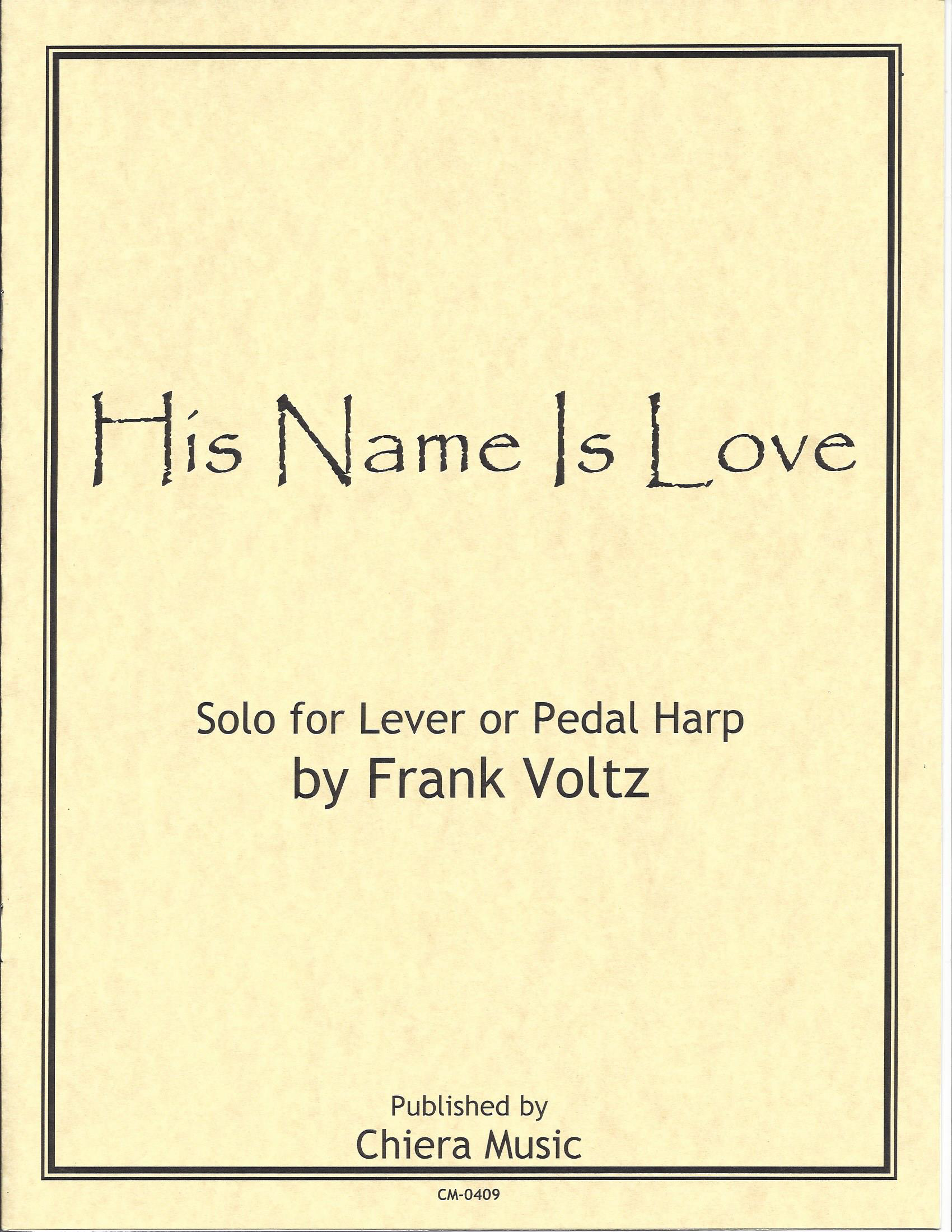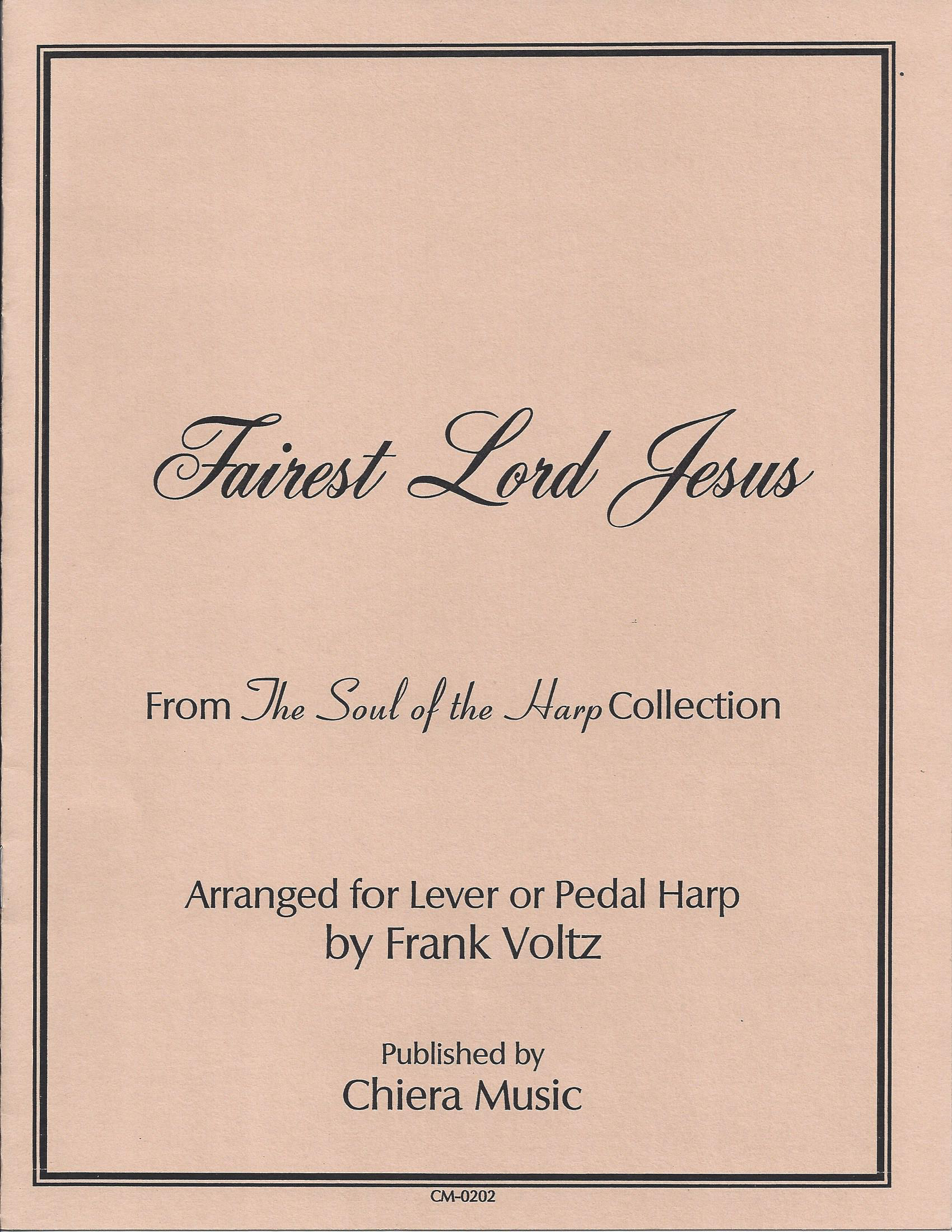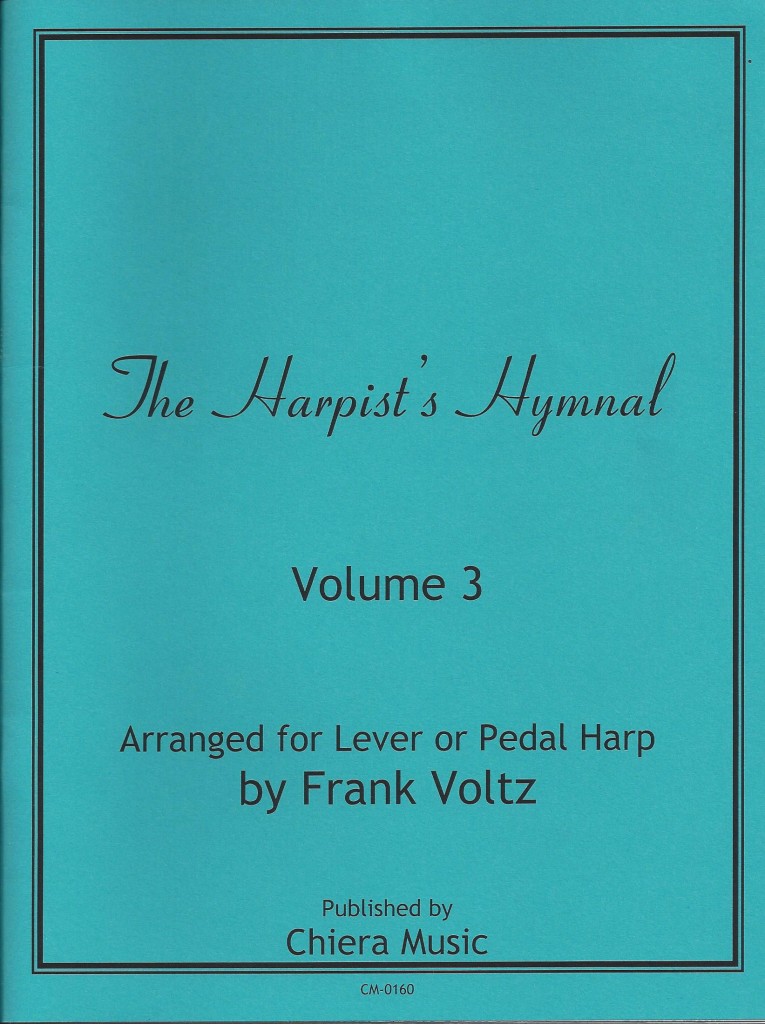Frank Voltz has produced three volumes of hymns for lever or pedal harp published by Chiera Music. Each volume of The Harpist’s Hymnal contains five hymns that are appropriate for worship services or any setting where these familiar tunes would be welcome. He uses the key signatures that are commonly found in hymnals to make it easy to accommodate other instrumentalists or vocalists. In fact, several of the pieces would make lovely duets with voice or a melody instrument.
These arrangements incorporate techniques such as arpeggios, hand-over-hand placing, rolled chords, triplets, and left hand accompaniments using octaves and tenths. However, there is still ample diversity so that they aren’t trite or boring. They are all well-suited for the harp.
Intermediate or advanced players will be able to sight-read this music. Unlike his previous publications, Voltz has included chord symbols on each piece, allowing more advanced players to easily embellish and improvise.
Volume one opens with “Take Time to Be Holy.” It is in 6/8 and the sixteenth notes give it plenty of movement. “My Jesus, I Love Thee” highlights triplets in the second verse and again at the end. Triplets also supply an interesting treatment to “I Surrender All.” The mostly descending sixteenth notes in “Near to the Heart of God” create a rippling effect. “Holy, Holy, Holy” includes instructions to roll every chord and to omit measures 38 and 39 if you are accompanying someone.
In volume two you’ll find “Brethren, We Have Met to Worship.” “Shall We Gather at the River” is one of the prettiest arrangements. Sixths are prevalent in “He Leadeth Me” and harmonics end the piece. Voltz uses a Satie-like accompaniment in his clever arrangement of “Breathe on Me, Breath of God” (think “Gymnopedie”). A downward progression of chords that simulate pealing bells and some scale glisses are used in “A Mighty Fortress Is Our God.” The time signature changes to 3/4 for the second verse and returns to 4/4 for the chorus. Inverted chords lead you to the grand ending. Pedal harpists may wish to use a C-major gliss instead of a scale gliss at the end.
There is a little more variety in the arrangements in volume three. For instance, Voltz uses a tango treatment in the second verse of “O Worship the King.” The left-hand accompaniment in “For the Beauty of the Earth” suggests almost a country-western feel. He uses a downward scale, low chords, and a muffle to end “Leaning on the Everlasting Arms.” There are a couple of lever or pedal changes and some scale glisses in “Near the Cross,” as well as in “Turn Your Eyes upon Jesus.” The latter is an especially appealing arrangement.
The typesetting is easy to read and page turns have been thoughtfully planned. Short intros lead into each piece. Any accidentals (and there are only a few) are notated with diamond-shaped notes for lever harp and pedal changes are marked below the staff. You’ll probably want to own all three volumes.
Voltz has written an original solo composition called “His Name is Love” in a similar style to the hymns in The Harpist’s Hymnals. This gentle and calming melody encourages quiet reflection. The composer suggests using it for harp therapy applications, as a church solo, or even as a recital piece.



Written in the key of C, it requires only two lever or pedal changes that are clearly marked. Page turns are manageable. It is sight-readable for the intermediate or advanced player.
Voltz has also arranged “Fairest Lord Jesus” in E-flat. He uses a repeated pattern of a four-note up and down scale of eighth notes throughout the music—first in the right hand and then he switches the action to the left hand. There are some jumps where both hands play the same chord an octave higher. These techniques make it slightly more challenging than the previous collection of hymns.
Voltz ends the piece with a C-major arpeggio. This is easy on the pedal harp as it only requires moving the E pedal to natural. It’s a little more complicated on lever harp to raise the three necessary E levers to natural while playing the final arpeggio, but it makes an interesting end to the piece.
If you want to raise the level of difficulty another notch, try his version of “Come, Christians, Join to Sing.” This one will test your ability to play syncopated rhythms and a slap bass. If you want to hear how it should sound, you can listen to it on Voltz’s The Soul of the Harp CD.
It also modulates from G major to C major, so again you have a few quick lever changes (or one simple pedal change). Voltz tries to simplify the lever changes by pre-setting one and moving another when there’s an opportunity.
This arrangement would come in handy if you’re playing for a contemporary worship service. Add all these to your library and you’ll have more than enough for a month of Sundays in church! •









